
TravelINDIA.COM
Thiruvananthapuram
I Love
Thiruvananthapuram
Home Page
Thiruvananthapuram, also known as Trivandrum, is the capital and the largest city of the Indian state of Kerala.The city
has a population of 788,271 inhabitants and a metropolitan population of 1.68 million.Thiruvananthapuram is a major
Information Technology hub in India, and contributes 55% of Kerala's software exports as of 2015.Thiruvananthapuram is
located on the west coast of India near the extreme south of the mainland. Referred to by Mahatma Gandhi as the
"Evergreen city of India",the city is characterised by its undulating terrain of low coastal hills.The city is
classified as a Tier-II city by the government of India.
Thiruvananthapuram is a major academic hub, and is home to the University of Kerala, Kerala Technological University the
regional headquarters of Indira Gandhi National Open University, and many other schools and colleges. Thiruvananthapuram
is also home to research centers such as the Indian Space Research Organisation's Vikram Sarabhai Space Centre, the
Indian Institute of Space Science and Technology, and a campus of the Indian Institutes of Science Education and Research.
The city is home to media institutions like Toonz India Ltd and Tata Elxsi Ltd, and is also home to Chitranjali Film
Studio, one of the first film studios in Malayalam Cinema, and Kinfra Film and Video Park at Kazhakoottom, which is
India's first Infotainment Industrial park.
Being India's largest city in the deep south, it is strategically prominent and hosts the Southern Air Command
headquarters of the Indian Air Force, the Thumba Equatorial Rocket Launching Station and the upcoming Vizhinjam
International Deepwater Motherport. Thiruvananthapuram is a major tourist centre, known for the Padmanabhaswamy Temple,
the beaches of Kovalam and Varkala, the backwaters of Poovar and Anchuthengu and its Western Ghats tracts of Ponmudi and
the Agastyamala.
The city is ranked among the best cities to live in India.The city was also selected as the best governed city in India
in the survey conducted by Janaagraha Centre for citizenship and democracy in 2017.
History
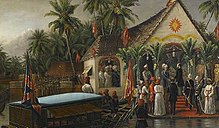
Thiruvananthapuram is an ancient region with trading traditions dating back to 1000 BCE.It is believed that the ships of
King Solomon landed in a port called Ophir (now Poovar) in Thiruvananthapuram in 1036 BCE.The city was the trading post
of spices, sandalwood and ivory.However, the ancient political and cultural history of the city was almost entirely
independent from that of the rest of Kerala. The early rulers of the city were the Ays. With their fall in the 10th
century, the city was taken over by the rulers of Venad.
In the late 17th century, Marthanda Varma who inherited the Kingdom of Venad expanded the kingdom by conquering kingdoms
of Attingal, Kollam, Kayamkulam, Kottarakara, Kottayam, Changanassery, Meenachil, Poonjar and Ambalapuzha. In 1729,
Marthanda Varma founded the princely state of Thiruvithamkoor and Thiruvananthapuram was made the capital in 1745 after
shifting the capital from Padmanabhapuram in Kanyakumari district.The kingdom of Travancore was dedicated by Marthanda
Varma to the deity Sri. Padmanabha (Lord Vishnu). The rulers of Travancore ruled the kingdom as the servants of Sri.
Padmanabha.
The city developed into a major intellectual and artistic centre during this period. The golden age in the city's history
was during the mid 19th century under the reign of Maharaja Swathi Thirunal and Maharaja Ayilyam Thirunal. This era saw
the establishment of the first English school (1834), the Observatory (1837), the General Hospital (1839), the Oriental
Research Institute & Manuscripts Library and the University College (1873). The first mental hospital in the state was
started during the same period. Sanskrit College, Ayurveda College, Law College and a second grade college for women
were started by Moolam Thirunal (1885–1924).
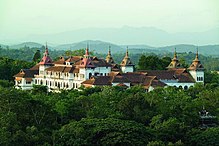 The Thiruvananthapuram Municipality came into existence in 1920. The municipality was converted into a Corporation on 30
October 1940, during the period of Chitra Thirunal Bala Rama Varma, who took over in 1931.The city witnessed
many-sided progress during his period. The promulgation of "Temple Entry Proclamation" (1936) was an act that underlined
social emancipation. This era also saw the establishment of the University of Travancore in 1937, which later became
Kerala University.
The Thiruvananthapuram Municipality came into existence in 1920. The municipality was converted into a Corporation on 30
October 1940, during the period of Chitra Thirunal Bala Rama Varma, who took over in 1931.The city witnessed
many-sided progress during his period. The promulgation of "Temple Entry Proclamation" (1936) was an act that underlined
social emancipation. This era also saw the establishment of the University of Travancore in 1937, which later became
Kerala University.
With the end of the British rule in 1947, Travancore chose to join the Indian union. The first popular ministry headed by
Pattom Thanu Pillai was installed in office on 24 March 1948. In 1949, Thiruvananthapuram became the capital of
Thiru-Kochi, the state formed by the integration of Travancore with its northern neighbour Kochi.The king of Travancore,
Chitra Thirunal Bala Rama Varma, became the Rajpramukh of the Travancore-Cochin Union from 1 July 1949 until 31 October
1956. When the state of Kerala was formed on 1 November 1956, Thiruvananthapuram became its capital.
Geography and Climate
Geography
Thiruvananthapuram is built on seven hills by the sea shore and is located at 8.5°N 76.9°E on the west coast, near the
southern tip of mainland India.The city situated on the west coast of India, and is bounded by Laccadive Sea to its west
and the Western Ghats to its east. The average elevation of the city is 16 ft (4.9 m) above sea level.The Geological
Survey of India has identified Thiruvananthapuram as a moderately earthquake-prone urban centre and categorised the
city in the Seismic III Zone.Thiruvananthapuram lies on the shores of Karamana and Killi rivers. Vellayani,
Thiruvallam and Aakulam backwaters lies in the city.The Soil type in the middle part of the city is dark brown loamy
laterite soil high in phosphates. Laterisation is a result of the heavy rainfall and humid conditions. On western coastal
regions of the city, sandy loam soil is found and on eastern hilly parts of the district, rich dark brown loam of
granite origin is found.
The Thiruvananthapuram Corporation is spread over 214.86 km2 (82.96 sq mi).The wider Thiruvananthapuram metropolitan area
comprises Thiruvananthapuram corporation, 3 municipalities and 27 panchayats, as of 2011.Being the largest city in
India's southern tip region, it is important for both military logistics and civil aviation in the southern part of the
country. Thiruvananthapuram is the headquarters of the Southern Air Command (SAC) of the Indian Air Force.
Climate
The city has a climate that borders between a tropical savanna climate and a tropical monsoon climate. As a result, it
does not experience distinct seasons. The mean maximum temperature 34 °C and the mean minimum temperature is 21 °C. The
humidity is high and rises to about 90% during the monsoon season.Thiruvananthapuram is the first city along the path of
the south-west monsoons and gets its first showers in early June. The city gets heavy rainfall of around 1827 mm per
year. The city also gets rain from the receding north-east monsoons which hit the city by October. The dry season sets in
by December. December, January and February are the coolest months while March, April and May are the hottest. The lowest
temperature in the city core recorded during winter was 16.4 °C on, and the highest temperature recorded in summer is
38.0 °C.
 Transport
Transport
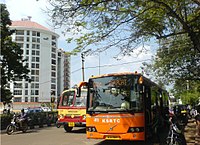 Public Transport
Public Transport
The majority of bus services are conducted by Government operators. There are also private operators.The city buses
operated by Kerala State Road Transport Corporation (KSRTC) are an important and reliable means of public transport
available in the city. The main bus stations in the city are the Central Bus Station in Thampanoor, where most of the
long distance buses ply from, and city bus station in East Fort, where most city buses ply from.Three-wheeled, yellow and
black auto-rickshaws and taxis, are other popular forms of public transport.Thiruvananthapuram Light Metro is a fully
elevated metro rail - rapid transit system planned to ease the congestion in the city.
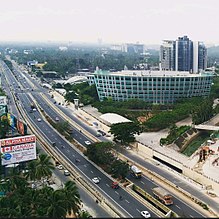 By Road
By Road
Thiruvananthapuram has a well-developed road transport infrastructure.The roads in the city are maintained by the
Trivandrum Roads Development Company Limited (TRDCL) and Kerala PWD.TRDCL manages the 42 km city roads which come under
the Thiruvananthapuram City Roads Improvement Project (TRCIP), which is the first urban road project in India.TRCIP is a
Public–private partnership project to improve and maintain the existing road network in the city to cater for the needs
of rapid urbanization.TRCIP has won the International Road Federation's Global Road Achievement Awards in 2015.TCRIP has
also been selected by United Nations as a replicable Public Private Partnership model.It was one of the 12 Public–private
partnership project case studies from across the world which fulfill the Sustainable Development Goals of the UN Agenda
2030.
Thiruvananthapuram is served by National Highway 66 of India's National Highways system.The city is connected to the
North-South Corridor of the National Highway system at Aralvaimozhi, which is 80 km south of the city.The State Highway
1, which commonly known as the Main Central Road is an arterial highway in the city. Other major highways in the city are
State Highway 2 and State Highway 45.The Mahatma Gandhi road is the main arterial road in the city.Another important
road is the Kowdiar road which is also known as the royal road, as it leads to the Kowdiar Palace.
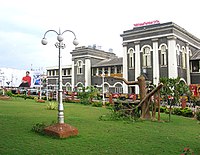 By Rail
By Rail
Thiruvananthapuram is a divisional headquarters in the Southern Railway zone of the Indian Railways.Long-distance trains
originate from Thiruvananthapuram Central and Kochuveli railway terminal. Kochuveli railway terminal is developed to
ease congestion on central station and it act as satellite station to Thiruvananthapuram Central.Thiruvananthapuram
Central is the busiest railway station In Kerala.Other railway station in the city are Thiruvananthapuram Pettah, Nemom
railway station, Veli railway station and Kazhakoottam railway station. Being the southernmost municipal corporation in
India, many longest train services of Indian Railways originate from Thiruvananthapuram like Thiruvananthapuram - Silchar
Superfast Express and Kochuveli - Amritsar Weekly Express. There are plans to develop a railway terminal at Nemom railway
station to reduce congestion at Thiruvananthapuram Central.
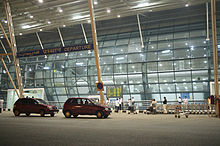 By Air
By Air
Thiruvananthapuram is served by the Thiruvananthapuram International Airport, located at Chakai, only about 6.7 kilometres
(4.2 mi) from the city centre. The airport started operations from 1935 and is the first airport in Kerala.Being one of
the gateways to the state, it has direct connectivity to all the major cities in India as well as Middle East, Malaysia,
Singapore, Maldives and Sri Lanka. As the city is headquarters of the Southern Air Command (SAC) of the Indian Air Force,
Thiruvananthapuram International Airport caters to the Indian Air Force (IAF) and the Coast Guard for their strategic
operations.IAF have an exclusive apron to handle all their operations. Trivandrum airport also caters to the Rajiv Gandhi
Academy for Aviation Technology which carries out pilot training activities.
By Sea
Small cruise ships often dock the Vizhinjam Harbour.A cruise terminal is under construction at Vizhinjam
Transshipment Terminal.Vizhinjam seaport has been designated by the government as an authorized immigration
check-post for entry and exit from India for international ships and cruises.
Tourists Places in Thiruvananthapuram
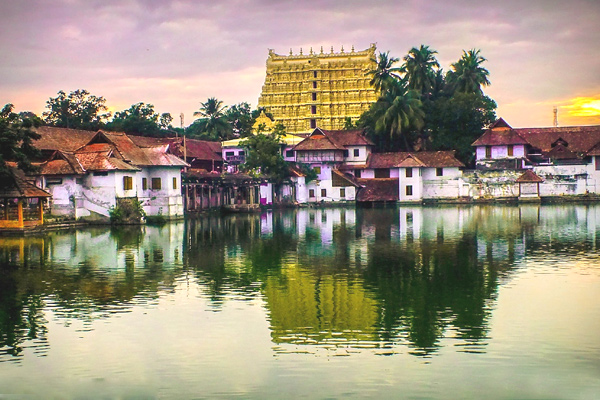
Sri Padmanabha Temple
Sree Padmanabhaswamy Temple is the prime attraction of Thiruvananthapuram City. Situated in one of the seven Parasurama
Kshetras, Sree Padmanabhaswamy Temple is considered among 108 Divya Deshams or the holy abodes of Lord Vishnu. The idol
of the presiding deity of Sree Padmanabhaswamy Temple is seen in a reclining posture (Anananthasayanam), which
symbolizes the eternal sleep of Yoga Nidra.
The temple is noted for its traditional Dravidian style of architecture and the ornamentation of the inner walls of the
sanctum sanctorum using frescoes and murals. The temple is also famous for being the wealthiest shrine in the world.
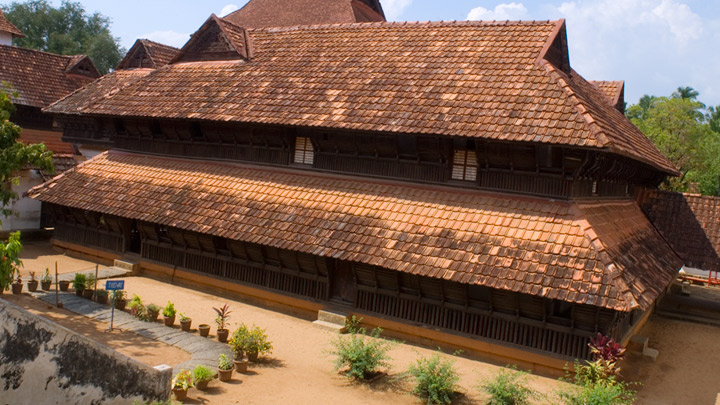
Padmanabhapuram Palace
Padmanabhapuram Palace, located within the Padmanabhapuram Fort of Padmanabhapuram Village in Thuckalay, is a major
tourist attraction near Thiruvananthapuram. The palace is regarded among the top ten palaces of the world and is located
at a distance of 64 km from Thiruvananthapuram. The erstwhile seat of the Travancore Empire, Padmanabhapuram is located
at the foothills of Veli, the hilly extensions of the Western Ghats.
Padmanabhapuram Palace is a fine example of traditional Kerala style of architecture. Built in 1601 using a unique
combination of egg whites, jaggery, lime, burnt coconuts, charcoal and river sand, Padmanabhapuram Palace is famous for
its carved mahogany ceilings, coloured mica windows, secret underground passages, inner courtyards, museum, granite
dance halls, etc.

Zoological Garden
Zoological Gardens or the Zoological Park is one of the prime destinations in Thiruvananthapuram city. Situated in the
vicinity of Napier Museum, Zoological Gardens was established in the year 1857 by the then Maharaja of Travancore. The
Zoological Gardens, regarded among the oldest Zoos of India, covers about 55 acres of land and is home to more than 75
different species such as lion tailed macaque, nilgiri langur, nilgiri tahr, indian rhino, asiatic lion, royal bengal
tiger, giraffe, hippo, zebra, cape buffalo, etc. Different species of snakes can also be found in the reptile house of
the Zoological Gardens.
 Poovar Island
Poovar Island
Poovar Island near Thiruvananthapuram is a much sought after tourist destination on the Arabian Sea coast. This island
close to the natural harbor Viahinjam is a wonderful place which includes the sea, rivers, beaches and backwaters all
in one location.
The beach at Poovar Island is neat and has golden sands. Swimming is not permitted here because of strong currents and
there are no water sports due to heavy fishing activity. There are many coconut trees in the island and mangroves along
the periphery which makes it suitable for bird watching. Pozhikkara beach 1 km away attracts many migratory birds.
There are three big resorts and a few small ones where tourists can stay. There are floating restaurants and Ayurvedic
massage parlors in the island. A two hour boat ride through the backwaters will cost INR 3000/- .Tourists can walk down
and explore the nearby fishing villages.
From Thiruvanathapuram a 45 minute drive will take tourists to the island or a boat ride from Thiruvananthapuram through
the backwaters will take 15 minutes. Kovalam beach 12 km away is a nearby attraction.
October to May is the best time to visit Poovar Island. Nearest airport, bus station and railway station is in
Thiruvananthapuram.
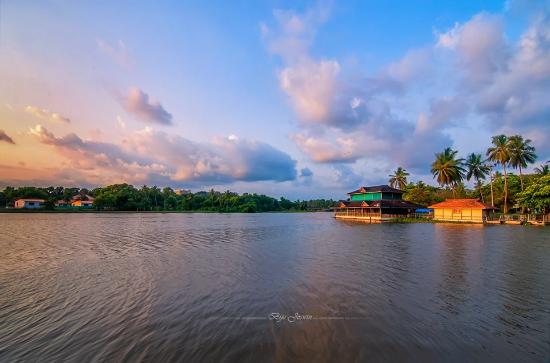
Veli Tourist Village
Veli Tourist village is one of the popular tourist spots located at the outskirts of Thiruvananthapuram, at a distance of
8 km away. Veli Tourist village lies at the spot where Veli Lake is separated from the Arabian Sea by a sand bar. The
clear water of Veli Lagoon offers water sports activities.

Light House Beach
The Light House Beach is the largest beach of Kovalam. The beach is named after a 35 m high light house which is situated
atop the hillock of Kurumkal. The shallow waters of the Light House Beach is ideal for swimming.

Napier Museum
Situated in the vicinity of Sri Chitra Art Gallery and Zoological Garden, the Napier Museum or the Art Museum is a
popular attraction, frequented by tourists.
The museum was established in 1855 and was rebuilt in the Indo-Saracenic style of architecture, by Robert Chisholm. It
was opened to the public in 1880.
The main architectural features of the museum are its gothic roof and minarets; ornamentation using bronze and stone
sculpture; wood and ivory carvings; lamps, textiles, handicraft items, kuftgiri works and traditional musical
instruments.
The collection at Napier Museum includes archaeological and historic artifacts; bronze idols, ancient ornaments, a temple
chariot and ivory carvings.
Culture
Thiruvananthapuram is known as the "Evergreen City of India" because of its green landscapes and the presence of many
public parks.Thiruvananthapuram has historically been a cultural hub in South India due to the active interest of the
rulers of erstwhile Travancore in the development of arts, architecture and liberal customs. As a testimony to this,
renowned artists like Maharaja Swathi Thirunal and Raja Ravi Varma hail from the city.Prominent social reformers such as
Sri Narayana Guru, Chattampi Swamikal, Ayyankali, Vakkom Moulavi and C. V. Raman Pillai also are from
Thiruvananthapuram.
Two of the three Malayalam triumvirate poets, Ulloor S. Parameswara Iyer and Kumaran Asan are from Thiruvananthapuram.
Annual literature festivals like the Kovalam Literary Festival, are held in the city.Literary development is further
aided by state institutions such as the State Central Library, one of the oldest public library in India, which was
established in 1829,and other major libraries including the Thiruvananthapuram Corporation Central library, and the
Kerala University Library.Thiruvananthapuram has been a hub of classical music, since the days of Maharaja of Travancore,
Swathi Thirunal.Thiruvananthapuram is known for many music festivals like the Navarathri Music Festival, one of the
oldest festival of its kind in South India,Swathi Sangeethotsavam, Soorya Music fest, Neelakanta Sivan Music Fest and
many other music festivals are organised by various cultural groups.The 111 day long Soorya Festival is the biggest art
and cultural event in Kerala.The Soorya Festival features various art forms and events, including film festivals, theater
festivals, dance, music, painting and photography exhibitions.

The Malayalam film Industry was started in Thiruvananthapuram. The first Malayalam feature film, Vigathakumaran directed
by J. C. Daniel was released in Thiruvananthapuram.J. C. Daniel is considered as the father of Malayalam film industry.
He also established the first film studio of Kerala, the Travancore National Pictures at Thiruvananthapuram in 1926.
The International Film Festival of Kerala (IFFK), which is held every year on December is one of Asia’s largest film
festival in terms of viewer participation.In addition to various film festivals, the presence of film certification body
like the Central Board of Film Certification's regional office, many movie studios and production facilities like the Uma
Studio, Chitranjali Studio, Merryland Studio, Kinfra Film and Video Park and Vismayas Max contributed to the growth of
Thiruvananthapuram as a centre of cinema.
Apart from the famous Padmanabhaswamy Temple, the city's architecture is championed by the Napier Museum and
Thiruvananthapuram Zoo, one of the oldest zoo's in India.Other architecture landmarks include Kuthira Malika
Palace, Kowdiar Palace, Attukal temple, Beemapally Mosque, Connemara Market, and the Mateer Memorial Church.
Thiruvananthapuram was the main centre of Laurie Baker's architecture.
Along with the major festivals of Onam, Vishu, Navarathri, Christian and Islamic festivals like Christmas, Eid ul-Fitr
and Milad-e-sherif, the diverse ethnic populace of the city celebrates several local festivals like Attukal Pongala,
Beemapally Uroos,Vettukaad Church Festival,Padmanabhaswamy Temple Aaraattu and Lakshadeepam festival.During Onam festival,
the state government conducts several cultural events for a week in the city.The Attukal Pongala festival attracts
millions women devotees across India and abroad. It is the largest gathering of women in the world.International
multicultural festivals are organised in the city by Germany's Goethe Zentrum, France's Alliance Francaise and Russia's
Gorky Bhavan centres by hosting a wide range of events and programmes throughout the year.

 The Thiruvananthapuram Municipality came into existence in 1920. The municipality was converted into a Corporation on 30
October 1940, during the period of Chitra Thirunal Bala Rama Varma, who took over in 1931.The city witnessed
many-sided progress during his period. The promulgation of "Temple Entry Proclamation" (1936) was an act that underlined
social emancipation. This era also saw the establishment of the University of Travancore in 1937, which later became
Kerala University.
The Thiruvananthapuram Municipality came into existence in 1920. The municipality was converted into a Corporation on 30
October 1940, during the period of Chitra Thirunal Bala Rama Varma, who took over in 1931.The city witnessed
many-sided progress during his period. The promulgation of "Temple Entry Proclamation" (1936) was an act that underlined
social emancipation. This era also saw the establishment of the University of Travancore in 1937, which later became
Kerala University.

 Public Transport
Public Transport
 By Road
By Road
 By Rail
By Rail
 By Air
By Air



 Poovar Island
Poovar Island



